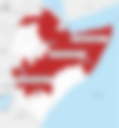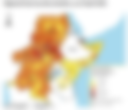
Desert Locust Impact Assessment East Africa
The Food Security and Nutrition Working Group (FSNWG) recently conducted a regional Desert Locust impact assessment in Ethiopia, Kenya, and Somalia using a harmonized approach. The assessment interviewed 7,871 agricultural respondents across Desert Locust-affected areas of the region between October and early December 2020.
We are pleased to share with you the findings of this Assessment.
Key Messages
- The assessment found that roughly one-third of cropping households and a half of livestock rearing households experienced Desert Locust-related pasture and crop losses.
- For impacted households, Desert Locust losses were often quite large. More specifically, nearly 7 out of every 10 impacted cropping and livestock-rearing respondents experienced high or very high losses to their crops and rangeland.
- A comparison of the data from the two rounds of surveys shows significant declines in the percentage of respondents observing Desert Locusts and related losses in Kenya, relative stability or slight declines in Ethiopia, and mixed results in Somalia.
- Desert Locust affected respondents also commonly expressed concerns that Desert Locusts were driving increased food insecurity/malnutrition, emotional stress/anxiety, issues relating to animal and human health, environmental impacts, and high costs of control.
- Due to multiple, compounding hazards (e.g. Desert Locusts, below-average rains, etc.), there was general pessimism amongst respondents (both those affected by Desert Locusts and those who were not) about harvest prospects and current rangeland conditions.
- Food insecurity amongst the interviewed agricultural respondents was found to be high with more than 20 percent of respondents in most of the assessed areas reported a reduced Coping Strategies Index (rCSI) exceeding 18, the threshold for Crisis (IPC Phase 3) or worse.
- The highest prevalences of food insecurity were observed in ten administrative areas in Ethiopia (Nogob, Jarar, Shabelle, Korahe, Borena, West Harerge, Doolo, Siti, Fafan, and South Omo). Additionally, major deteriorations in food insecurity amongst agricultural households were found between Round 1 (conducted in June/July) and Round 2 (conducted in October/November/December) in Awdal, Galgaduud, and Woqooyi Galbeed in Somalia and in Guji, Hareri, Korahe, Siti, and South Omo in Ethiopia. Given already high levels of food insecurity, current challenges to crop and livestock production threaten to drive further food security deterioration.
Please download the full assessment in the link below, and feel free to share it within your networks.



